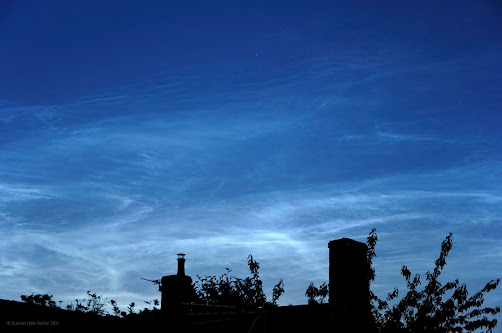On Thursday I took another picture of the sun using the same set up as I have described in an earlier post. I did make a mistake this time. I had pointed the telescope, as before, using the shadow cast by the sun before taking off the lens cap and improving the focus and alignment. However, I had left the star diagonal, eyepiece and, importantly, the eyepiece cap in place and when I reached down to remove it I had the brief shock of burning on my fingers. The sun, of course, had burnt a neat hole in the eyepiece cap and my fingers had touched molten plastic! It goes to show how careful you need to be. In fact, when I took the eyepiece out to check it over, I noticed that some of the inner plastic support for the lens had been melted, presumably when the sun was off centre. I am beginning to think I may need to stop down the objective lens to reduce the power of the sun's rays.
Anyway, here is my image (taken at 11:07 UT):-
The image has been rotated by 25 degrees so that North is at the top and East is at the left. I have also annotated the image to mark on the designated Active Regions (AR numbers). AR2993 and AR2994 are pretty big areas of sunspots. For example, the single connected region AR2993 is about 32 pixels across in this image whereas the full diameter of the sun is 1065 pixels. The sun is 864,000 miles in diameter and so this area of activity is roughly (32/1065) x 864,000 = 26000 miles across or 3.3 earth diameters! There is a lot of detail here. At full resolution (click on image) you can see that individual areas are made up of lots of much smaller spots.
For comparison, this is Solar Dynamics Observatory image taken on this day (Courtesy of NASA/SDO and the AIA, EVE, and HMI science teams):-
You can see how well the two images correlate.
All text and images © Duncan Hale-Sutton 2022 (except for the image from the SDO).










